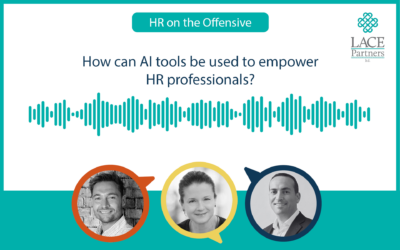How many businesses – and HR teams by extension – have been able to properly leverage data and analytics to drive productivity since lockdown? Has there been a tendency for some organisations to over elaborate on the way they analyse their people performance data? These were just a couple of questions that we posed to Simon Haines from Simply Get Results, who recently spoke on the HR on the Offensive podcast.
You can listen to that podcast and the others in the ongoing series here.
What has changed from how your clients have been using their approach to data and analytics in the last six to nine months?
There have been some very clear phases that emerged during this period of pandemic. The initial phase – the ‘Emergency response’ phase – was about migrating to remote working, a focus on headcount tracking and reporting. It was a real challenge, because everything moved so fast that the data that companies were having to deal with wasn’t able to keep up with the ever moving situation that businesses found themselves in and how they tried to survive. We certainly saw a large uptick in tracking of work patterns; you’re talking the likes of Microsoft Workplace, etc.
That proved to be a bit of a ‘double-edged’ sword, however, as it identified long working hours and found ways to help them, but for some employees there was a definite sense of surveillance. The more recent phases have seen a shift in the way in which businesses are looking at the future size, shape and skillset of their workforce, as well as the need to navigate new market conditions. What we are seeing now is that all businesses are looking at how they use their data and analytics to see how they can navigate these difficult market conditions.
What we are also seeing is how the pandemic has built to the forefront of minds that need to have a single set of data across people, workforce and productivity. How all these different data sources can be fed into one platform for the purposes of delivering an effective future optimisation plan for your workforce is also an important strategic goal for many businesses now.
Are you seeing different uses of data across different clients that you work with, in terms of how the data flows through their business and then impacts how they treat their employees during this crisis?
This is a very difficult period we are all in right now; business and HR leaders are having to make some very tough decisions about their workforce. Pre-pandemic most businesses would look at their strategic workforce planning approach every five or so years, but now what we’re seeing all companies looking strategically at their workforce right at this moment we are in.
I see this as an approach that will need to happen on a regular basis, probably annually, with data and analytics playing its part in predictive modelling.
In order to be confident in what you are doing being the right thing for the business, the use of data and analytics to evidence your decision making is critical, so ask the questions ‘what are the capabilities we need in our business in future? What volumes do we need? Where do we need to deploy them in our business?’. These are key questions that using analytics can help to support what are going to be critical decisions that need to be made rapidly in the current landscape.
Now more than ever our workforce decisions need to be fair, transparent, inclusive. It is not good enough for senior executives to go into a room and come out with a plan and a list of redundancies. There is a responsibility to make assumptions visible, show all options have been considered, with data and analytics used to show robust and evidence-based approaches.
Data alone isn’t the ‘be all and end all’ however. It needs to be matched with human knowledge and expertise to make well-balanced decisions. That is an art right now, but it defines the leaders from today, as the heroes from tomorrow.
How do HR teams manage effective integrated HR data sets when they are having to deal with multiple platforms, multiple sources, etc?
The HR tech landscape is more complex than ever, data is disaggregated across too many systems, that it is like trying to drink through a fire hose. There is so much data and noise – it is too much. You have three choices:
- Accept that your data is widespread and work locally to find the solutions and the info you need to access.
- Spend (sometimes a fortune) on building a ‘data lake’ to bring it all together with a bespoke front end to analyse everything.
- Work out what is most important for your business and pull this together to understand what is fundamental to your business to achieve its strategic objectives.
It will come as no surprise that we advocate option three.
Do businesses over-interrogate their data?
In some circumstances I think yes. Throwing more and more data at your strategic questions you are asking as a business can mean that you are in danger of turning your decision making into an over elaborate technical exercise. I often advocate with clients to take a step back and ask themselves their top five questions they want their data sets to achieve. Across business, people, finance, customer decisions, are what leaders are having to quickly juggle with right now and trying to build a machine to assimilate all of the data you have and crunching that to give you answers is too much of an ask.
You can over-analyse and have too much data so you should always try to separate between the analytics you need to answer for your strategic business decision making, with the operational/transactional, where you need to know what do you need to operate your business and optimize the use of your workforce.
If you would like to talk to LACE Partners about your people analytics or strategic workforce planning approaches, then get in touch with us at info@lacepartners.co.uk. Alternatively, you can get in contact with our Executive Director for HR Technology Max Bailey. You can also get in contact with Simon from Simply Get Results if you’d like to discuss how they can support your people data and analytics approach.






